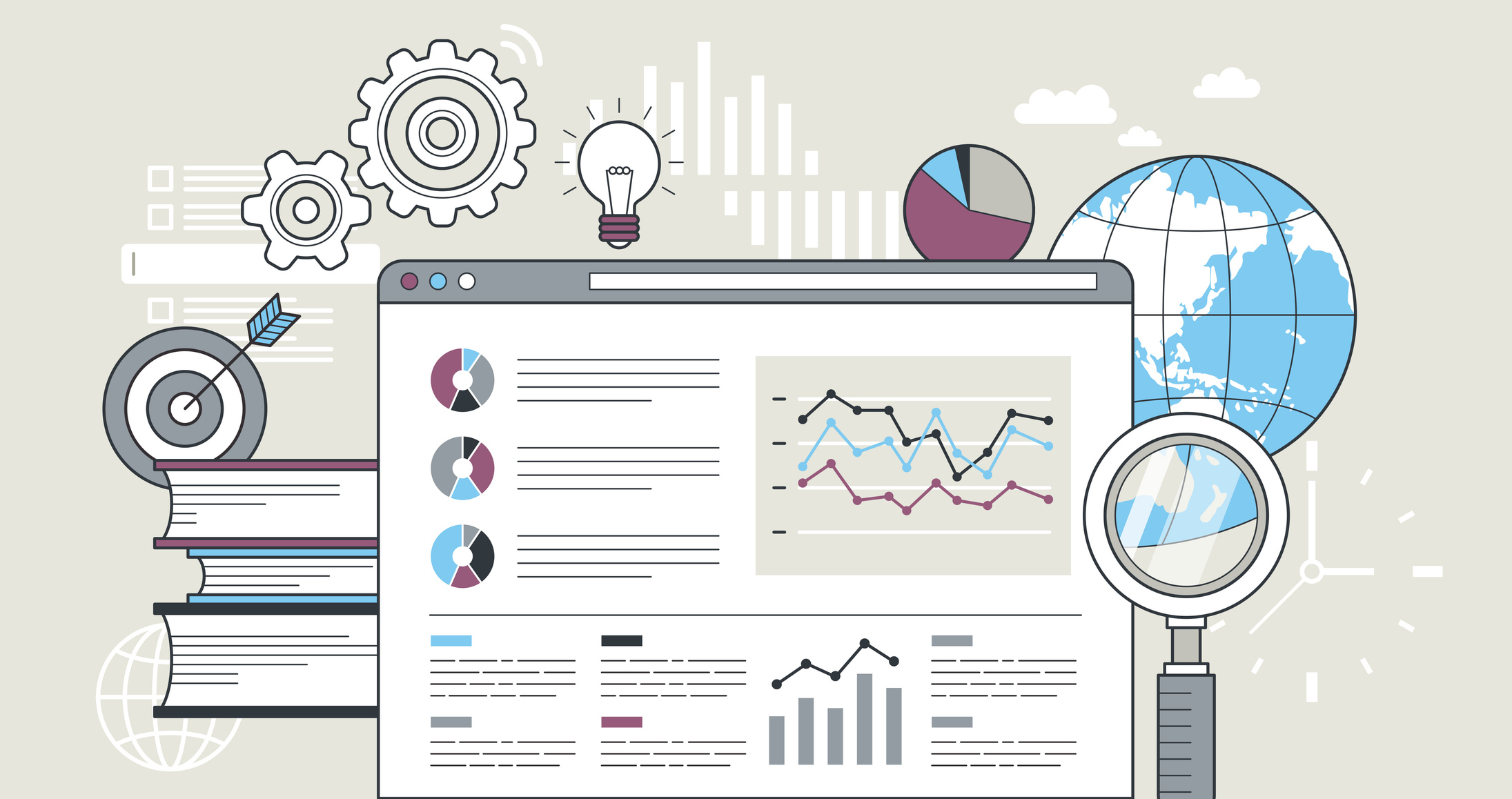When it comes to your website, performance matters more than you might think. A fast, smooth site keeps visitors happy, improves your search rankings, and helps turn clicks into actual customers. But here’s where many businesses get it wrong, they assume that to see real improvements, they need a full (and expensive) redesign.
The truth is, you can make a big impact on your website performance without tearing everything down and starting over. With the right adjustments and smart optimizations, you can boost speed, improve user experience, and strengthen SEO, all while keeping your current design intact.
How Strong Performance Builds Trust and Engagement
Nobody likes waiting for a slow website to load. Whether you’re shopping, reading, or signing up for something, a few extra seconds of delay can be all it takes for someone to click away. A fast, efficient website keeps people engaged, makes your business look professional, and helps build trust. Plus, search engines like Google pay close attention to site speed when deciding how to rank your pages. Even a small delay can hurt your search visibility and drop you below faster competitors.
It’s not just about loading times, either. Good website performance improves how smoothly pages scroll, how quickly buttons respond, and how easily people can complete tasks, all of which boost user satisfaction and increase the chances they’ll come back.
Most importantly, improving website performance isn’t a one-and-done task. It’s something you need to check on regularly because technologies, user expectations, and even search algorithms keep evolving. Staying on top of it gives your site the best chance to stand out and succeed.
How to Measure and Your Website Performance
Before you jump into making changes, it’s important to understand where your website stands right now. You can’t improve what you haven’t measured.
Check Your Site Speed with Free Tools
Luckily, you don’t need fancy software to figure out how your site is performing. Tools like:
are free and give you a clear snapshot of how your site loads across different devices and connections. They’ll flag issues like slow-loading images, bulky scripts, or anything else that’s dragging down speed.
Pay Attention to Core Web Vitals
You’ll also want to look at Core Web Vitals, a set of key metrics Google uses to assess your site’s quality and user experience. These aren’t just technical numbers; they reflect how real people experience your site.
Here’s what to focus on:
- Largest Contentful Paint (LCP)
This measures how long it takes for the biggest visible element (like a banner image or headline) to load. For example, if your PageSpeed Insights report says your LCP is 4.5 seconds, that’s too slow (Google recommends under 2.5 seconds). You might need to compress large images or improve your hosting speed to fix it. - First Input Delay (FID)
This looks at how quickly your site reacts when someone tries to interact, like clicking a button or filling out a form. If the report shows an FID over 100 milliseconds, it suggests your JavaScript might be too heavy, and you may need to optimize or defer scripts. - Cumulative Layout Shift (CLS)
This measures how much things on the page unexpectedly shift around as it loads (which can be super frustrating for users). If your report shows a high CLS score, it might be because images or ads are loading without set dimensions, causing the layout to jump. Adding size attributes or using CSS to reserve space can help stabilize things.
By breaking down these metrics, you can see exactly where your site needs attention and you can prioritize fixes that make the biggest difference for both your visitors and your search rankings.
Optimize Your Images and Media
It’s no secret that images and media can slow down a website, they often make up the bulk of a page’s size. But you can fix a lot of performance problems just by handling these elements better.
Compress and Resize Your Images
A common mistake is uploading huge, high-resolution images when the web version only needs something much smaller. Before you hit upload, make sure your images are resized to the right dimensions and compressed for web use. Tools like TinyPNG can help reduce file size without making your photos look blurry or pixelated.
Switch to Modern File Formats
If you’re still relying on old-school JPEG or PNG for everything, it’s time to consider switching to modern formats like WebP. These newer formats offer better compression, meaning faster load times and less strain on your visitors’ devices, while keeping image quality high.
Defer Loading Offscreen Media
You don’t need to load every image or video on the page right away, especially if they aren’t visible when the page first opens. Lazy loading is a simple trick that loads media only when the user scrolls near it, cutting down the initial load time and making everything feel faster.
Reduce Code and Script Bloat on Your Website
It’s easy for websites to get weighed down over time, extra bits of code, unused plugins, and old scripts quietly pile up in the background, making pages slower to load and harder for browsers to process.
Minify Your CSS, JavaScript, and HTML
Minifying sounds technical, but it’s really just the process of cleaning up your site’s code by removing anything that isn’t strictly necessary, like extra spaces, line breaks, and comments. This makes the files smaller and faster for browsers to load. Many website platforms or build tools can handle minification automatically, or you can use online tools to run it manually if needed.
Get Rid of Unused Scripts and Plugins
Over time, you might have installed plugins or added scripts that you no longer use, maybe an old social sharing tool, a fancy slider you swapped out, or some tracking code that’s no longer active. It’s a good idea to do a regular audit of what’s installed on your site. If something isn’t essential, remove it. Fewer moving parts mean less for browsers to load and fewer chances for something to break.
Improve Website Performance with Better Hosting
Your website might look great on the surface, but what’s happening behind the scenes has a big impact on how fast it runs. Hosting, caching, and how your content gets delivered can all make a noticeable difference and small improvements here can seriously boost overall performance.
Make Sure Your Hosting Can Keep Up
Not all hosting is created equal. If you’re still on a basic shared plan but your site has grown, it might be time to upgrade. Look for a hosting provider that offers reliable uptime, responsive support, and enough resources to handle your traffic smoothly. Even the best-built site can feel sluggish if the server behind it isn’t up to the job.
Here’s a quick comparison of the main types of hosting:
| Hosting Type | What It Is | Pros | Cons |
|---|---|---|---|
| Shared | Multiple sites share the same server resources | Affordable, easy to set up | Limited resources, slower during traffic spikes |
| VPS (Virtual Private Server) | A virtual server with dedicated resources, shared physical machine | More control, better performance | Costs more, requires some technical know-how |
| Cloud | A network of servers working together to host your site | Scalable, reliable, handles traffic surges well | Can be pricier, complex setup depending on provider |
Set Up Smart Caching
Caching is like giving your website a shortcut. Instead of loading everything from scratch every time someone visits, caching stores and reuses common elements which makes pages load much faster. Browser caching helps returning visitors, while server-side caching can speed things up across the board. Most platforms offer plugins or built-in settings to make this easy to manage.
Use a Content Delivery Network (CDN)
If your visitors are spread out across different regions, a CDN can really help. It works by storing copies of your site on servers around the world, so users get content from the location closest to them. This cuts down on loading time and makes your site feel snappier no matter where someone’s visiting from.
| CDN Option | What It Does | Best For | Example Providers |
|---|---|---|---|
| Global CDN | Distributes your website’s static files (like images, CSS, JavaScript) across servers worldwide | Sites with an international audience | Cloudflare, Akamai, Fastly |
| Regional CDN | Focuses on optimizing delivery within a specific geographic area | Local or regional businesses targeting nearby users | BunnyCDN, StackPath |
| Managed CDN (through host) | CDN services included as part of your hosting plan | Businesses that want simple setup without managing separate tools | Kinsta, WP Engine, SiteGround |
Improve Usability for a Better Website Experience
Improving website performance isn’t only about making things faster, it’s also about making the experience smoother and easier for visitors. Even a lightning-fast site can frustrate users if it’s clunky to navigate or overloaded with distractions.
Simplify Navigation and Internal Links
A clear, straightforward site structure helps visitors find what they’re looking for without feeling lost. It also helps search engines better understand how your pages connect. Review your menus, navigation, and internal links, are there too many layers or dead-end pages? Streamlining things makes the site easier to use and keeps people moving through your content.
Put Mobile First
More people browse on phones than ever before, so a site that looks great on desktop but struggles on mobile is going to lose visitors fast. Make sure your website is fully responsive, loads quickly on mobile networks, and offers smooth, easy interactions (think: big enough buttons, no awkward zooming or pinching, and fast tap responses).
Be Picky About Third-Party Tools
It’s tempting to add lots of external tools ... live chat, analytics, social feeds, pop-ups ... but each one adds extra load time. Take a hard look at what’s really delivering value. If a tool doesn’t help your visitors or support your goals, consider removing it to lighten the load and keep your site running smoothly.
Quick Checklist: Audit Your Site’s User Experience
Here’s a simple checklist you can copy, save, or share with your team to help spot common usability and performance slowdowns:
- Is your navigation clear and easy to follow?
- Do all pages work smoothly on mobile devices?
- Are your images and videos optimized and loading quickly?
- Are there any third-party tools or plugins you’re no longer using?
- Are there too many pop-ups, banners, or distractions?
- Do key pages (like contact or checkout) load without delays?
- Have you tested your site’s speed recently with tools like PageSpeed Insights?
- Have you reviewed user feedback or analytics for drop-off points?
Make sure performance improvements also consider accessibility standards, like making sure buttons, forms, and navigation are usable for everyone, including people using assistive technologies.
Maintain Great Website Performance
Improving website performance isn’t something you do once and forget about. Websites change, new content gets added, tools get updated, and user expectations keep rising. To keep everything running smoothly, you need to stay on top of it.
Run Regular Performance Checks
Make it a habit to check in on your website’s performance regularly, not just when something seems broken. Use tools like Google PageSpeed Insights or GTmetrix every few months to spot new issues before they pile up. Think of it like a routine tune-up for your car, a little effort now saves bigger headaches later.
Listen to Analytics and User Feedback
Performance isn’t just about numbers; it’s also about how real people experience your site. Keep an eye on your analytics, are people dropping off certain pages or abandoning forms? Pay attention to what visitors tell you directly too. If users mention things feel slow or clunky, take that feedback seriously and investigate. Small adjustments based on real-world use can go a long way in keeping your site sharp and user-friendly.
Building a Strong Foundation for Lasting Website Performance
Improving your website performance doesn’t have to mean tearing everything down and starting fresh. With a handful of smart, focused tweaks, you can speed up your site, boost your SEO, and keep visitors engaged, all without the cost or stress of a full redesign.
Improving website performance isn’t just good for users and SEO, it’s also good for the environment. Faster, lighter websites use fewer server resources and less energy, which lowers your digital carbon footprint.
Not sure where to start? Let us help you audit your website and uncover performance improvements. We've worked with a wide range of clients who were shocked by how much performance we could squeeze out of their existing sites, sometimes cutting load times in half just by cleaning up scripts, images, and hosting configurations, no redesign required.




